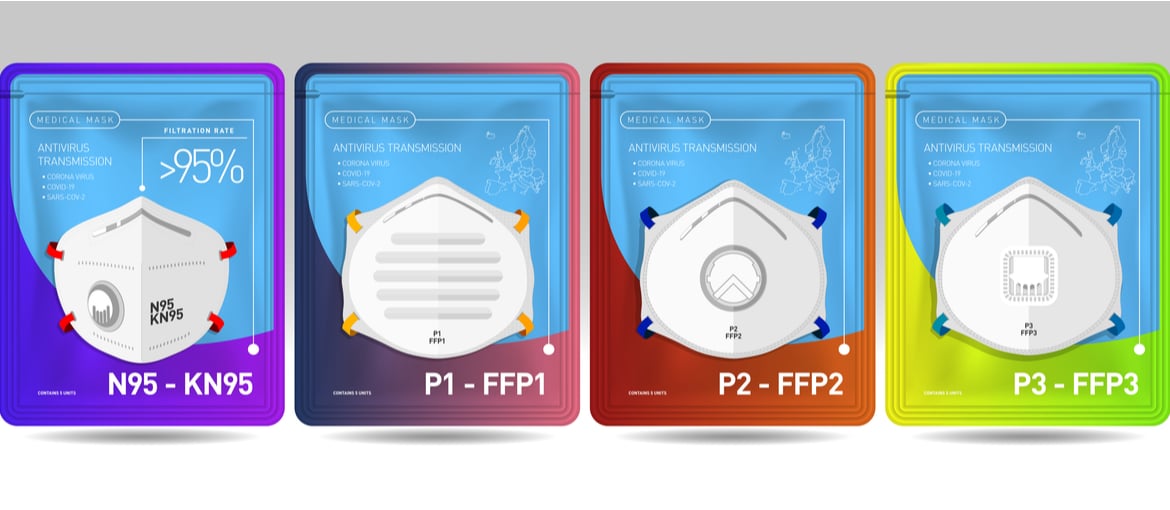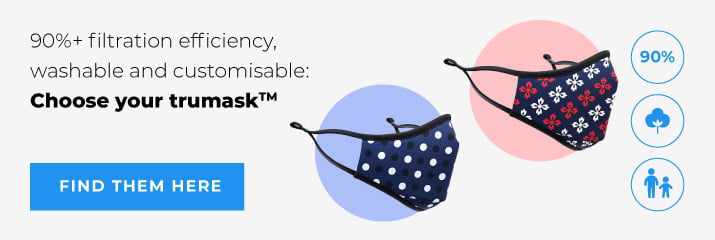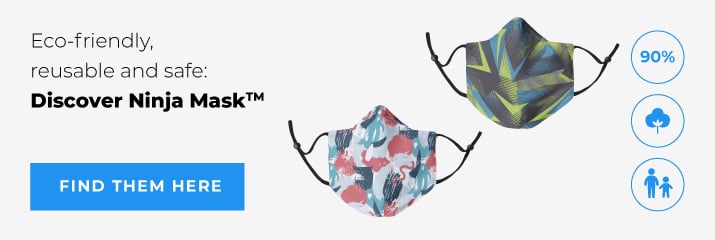Table of Contents
N95 masks, KN95, and FFP2 masks: a comprehensive guide to the differences between them
The second wave of the COVID-19 pandemic has officially arrived.
The onset of autumn has been marked by a sharp rise in cases in all the major European countries, which have responded by strengthening the precautionary measures in place to protect citizens and the most at-risk members of the population. Face masks are, once again, the main tool being used to limit the risk of spreading or catching COVID-19. Countries like France, Italy, the UK and Spain are considering making it obligatory to use masks outdoors as well as indoors, to reduce the spread of the virus as far as possible.
By popular demand, we have gathered together and summarised all the information we could find on high-filtration masks and their various certifications. In this article, we will explain in brief the features of KN95, FFP2 and N95 masks, so you know the differences between them when you come to make your purchase.
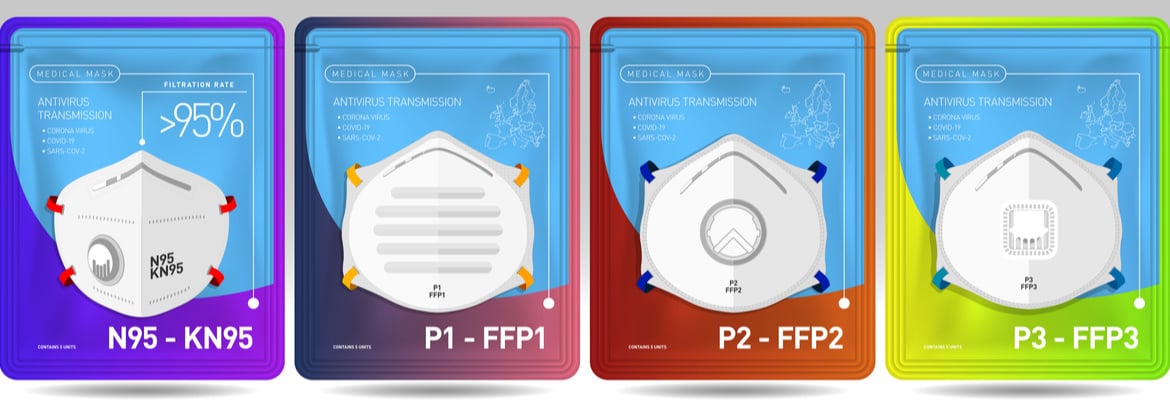
N95 masks, KN95 and FFP2 face masks: let’s get things straight
As well as the classic blue surgical masks, which are perfectly fine for avoiding infecting others, but less useful for protecting yourself, you can also buy certified filtering face masks. The initials FFP in the name FFP2 stand for ‘Filtering Face Piece’, and these masks provide very effective filtration of dangerous microparticles, which is why they are used in environments that present a high risk of contagion.
When you start looking for filtering masks that have passed scientific tests to confirm their protective characteristics, you soon run into initials like FFP2, KN95 and N95, especially if you’re looking for something to protect you from pollutants or microparticles that carry viruses. The certification of these masks varies depending on their place of origin.
There are three major types of filtering face mask on the market:
- European-certified FFP2 face masks
- American-certified N95 face masks
- Chinese-certified KN95 face masks
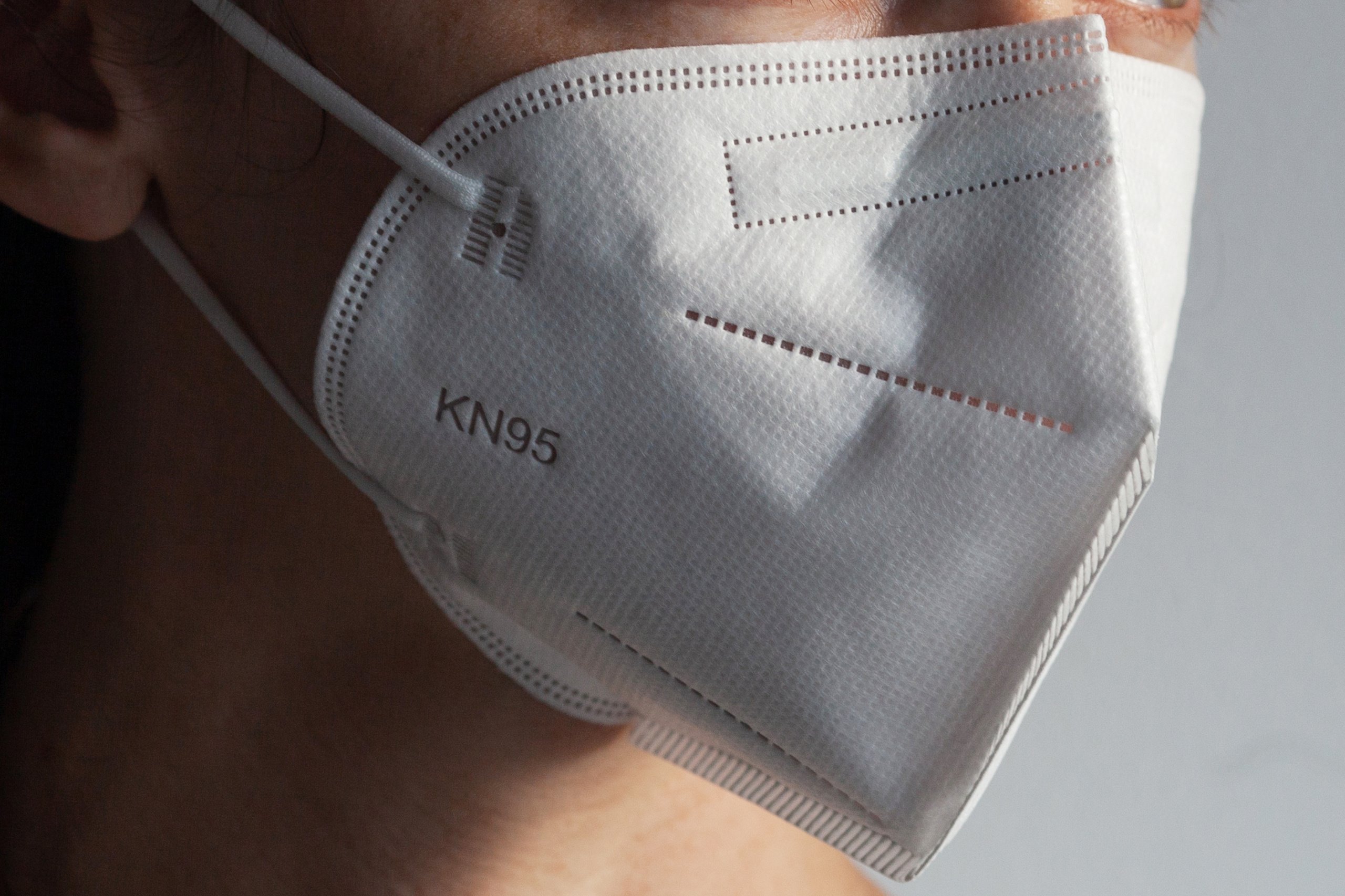
Filtration performance of KN95, N95 and FFP2 masks
The KN95, N95 and FFP2 masks provide similar levels of filtration: all three have a filtration capacity above 94%, according to the standards that govern their technical characteristics.
Here is the specific certified filtration capacity for each of the three types of filtering face masks:
- FFP2 face masks: 94% filtration capacity
- N95 face masks: 95% filtration capacity
- KN95 face masks: 95% filtration capacity
The standards governing KN95, N95 and FFP2 masks
KN95, N95 and FFP2 masks differ in the procedure used to calculate their filtration. This procedure changes based on where they are produced, as it follows the certification rules established by the country where the devices’ functioning is tested.
We’ve put together a brief summary of the differences between the standards adopted to certify KN95, N95 and FFP2 masks.
FFP1, FFP2 and FFP3 masks – EN 149: 2001 + A1: 2009
FFP2, FFP1 and FFP3 masks are governed by a piece of European legislation, the famous EN 149: 2001, updated in 2009. This law defines the standards used to certify the effectiveness of ‘respiratory protective devices’, and clearly establishes the requirements, tests and branding for the masks.
N95 mask – NIOSH-42CFR84
N95 masks are covered by American standard NIOSH -42CFR84, drawn up by NIOSH (National Institute for Occupational Safety and Health), the American body responsible for certifying the actual effectiveness of filtering facial devices.
KN95 mask – GB2626-2006
KN95 masks are certified in the People’s Republic of China based on the rules set out in standard GB2626-2006. This standard dictates the technical requirements, testing methods and branding for respiratory devices with a protective filter used to purify the air from potentially damaging particles.

KN95, N95 and FFP2 masks: the varying testing methods
Although their overall aim is the same – to certify the devices’ actual capacity to protect people from inhaling potentially damaging substances or particles – each of the three standards that certify filtering face masks is different from the others. The differences lie in the methods adopted to test the devices – depending on the type of test carried out, the requirements and test conditions may therefore vary.
This table summarises the similarities and differences:
| PROTECTION FACTOR | FFP2 MASKS
(EN 149: 2001) |
N95 MASK (NIOSH-42CFR84) | KN95 MASK
(GB2626-2006) |
| Filtration efficiency | ≥ 94% | ≥ 95% | ≥ 95% |
| Test agent | NaCl and paraffin oil | NaCl | NaCl |
| Test flow rate | 95 l/min (variable during test) | 85 l/min | 85 l/min |
| Total inward leakage (TIL) tested on individuals performing exercises | 8% | not measured | 8% |
| Allowed inhalation resistance (max pressure drop) | ≤ 70 Pa @ 30 L/min; ≤ 240 Pa @ 95 L/min; ≤ 500 Pa (clogging) | ≤ 343 Pa | ≤ 350 Pa |
| Exhalation resistance (max pressure drop) | ≤ 300 Pa | ≤ 245 Pa | ≤ 250 Pa |
The main differences between the standards: the polluting substances tested and inhalation and exhalation resistance
When you look at the parameters used, a few differences stand out.
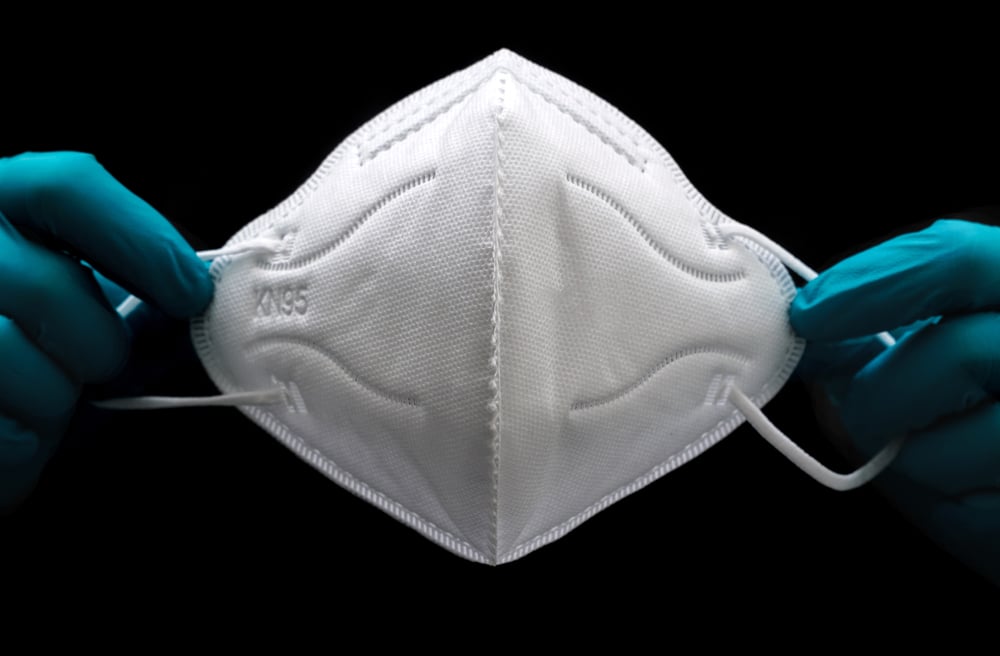
1.The European standard uses liquid substances in tests as well as solids
The first difference relates to the polluting substance used when testing the FFP1, FFP2 and FFP3 masks.
The European certification system seems more in depth here, given that it also carries out testing using paraffin oil, a liquid pollutant, as well as using sodium chloride particles in a solid state.
This is certainly a positive thing, as it means the effectiveness of the masks is tested not only with solid-state pollutants (like a powder), but also, and most importantly, particulates in the form of droplets and aerosols spread by the air.
2.The European standard pays more attention to inhalation resistance
The second immediately apparent difference is the figure for the permitted inhalation resistance.
The average figure for resistance in the European standard is much lower than in the American and Chinese certification systems, meaning that FFP2 masks made following the European standard should ensure greater comfort and durability.
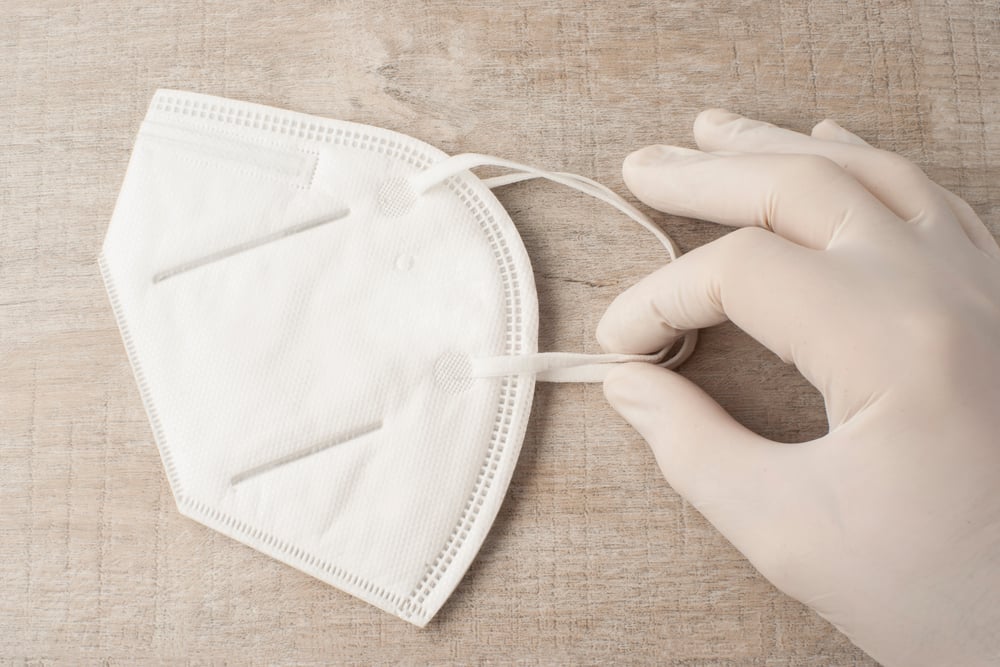
Durability of FFP2 masks: what the science says
How long does a FFP2 mask last? FFP2 masks can be marked with the letter (R) for ‘reusable’ or (NR) for ‘non-reusable’. Most FFP2 masks fall into the latter category – they are protective devices that progressively become less effective with the passing of time. For this reason, an FFP2 mask typically lasts around eight hours in at-risk environments, or a single work shift. Even if it is worn while keeping a safe distance in low-risk areas, the mask should nevertheless be thrown away after eight hours, since breathing and exposure to moisture gradually affect its filtration capacity and physical integrity. Once they become significantly damp, FFP2 masks should be binned.
FFP2 masks with and without valves: what’s the difference?
FFP2, N95 and KN95 masks can be produced with or without a valve. But what difference does it make? Put simply, masks with a valve are safe for the wearer, but not for those around them. The valve filters the incoming flow of air but not the outgoing air, meaning masks with a valve should NOT be worn by people who have, or may have, COVID-19 – instead these people should choose masks without a valve, which filter both the inhaled and exhaled air: surgical masks or KN95, FFP2 or N95 masks with no valve.
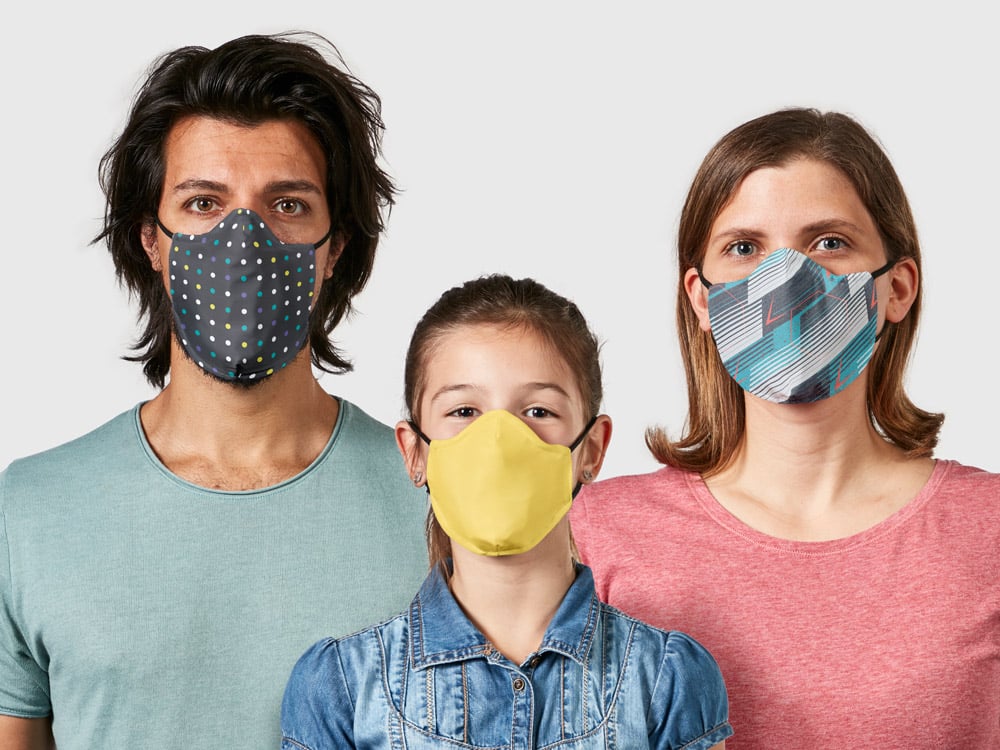
Pixartprinting’s washable and reusable filtering masks
As we mentioned above, the main downside of FFP2, N95 and KN95 masks is the fact that they are disposable – after a single eight-hour period of use they lose their filtration and protective ability and must be thrown away. The same, however, does not apply to Pixartprinting’s washable masks. Our masks have a filtration capacity of over 90%, are customisable and comfortable to wear, and are washable and reusable. The Trumask and NinjaMask masks are not designed for use as personal protective equipment and so cannot be worn in hospitals and healthcare facilities, but their certified filtration efficiency of above 90% makes them the ideal solution for normal everyday use. They offer a high level of protection, the convenience of being able to wash and reuse them numerous times, and they also look attractive, and allow you to customise the design. Click this link to choose your preferred model.

